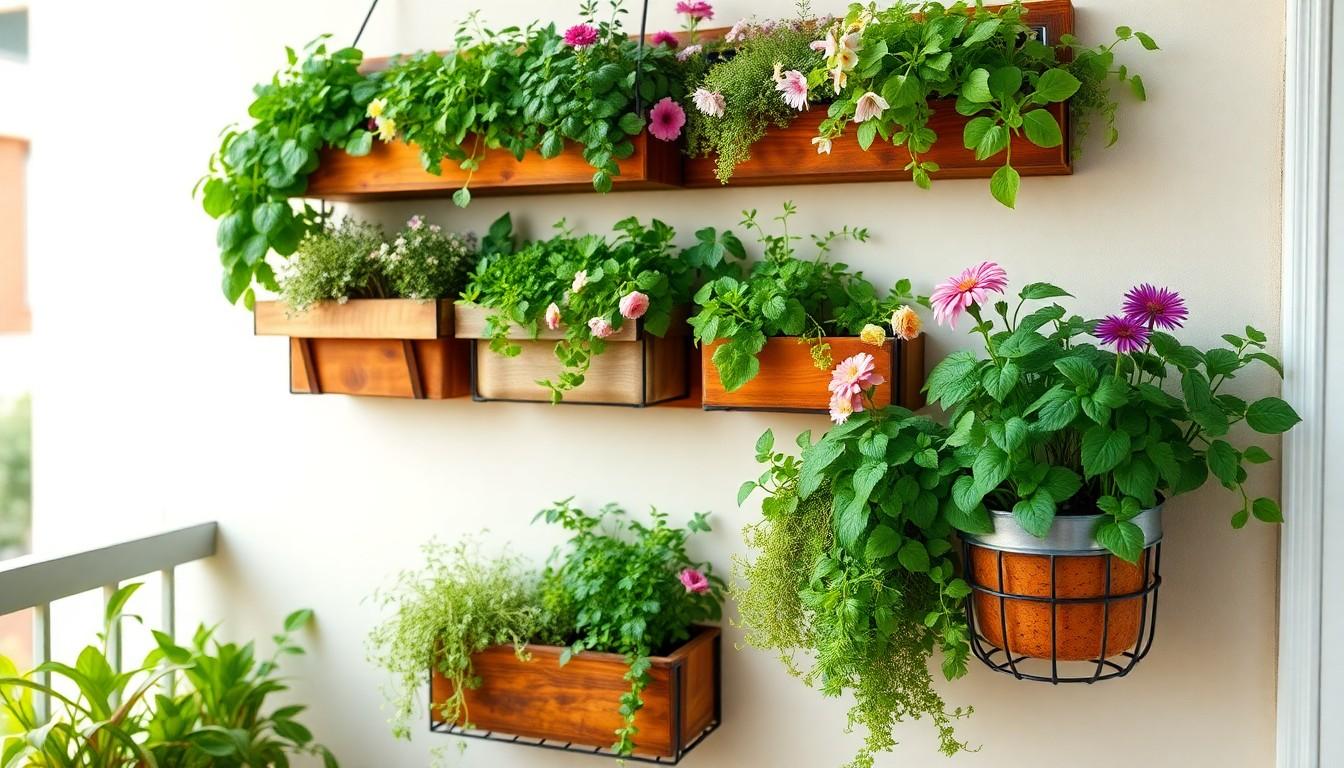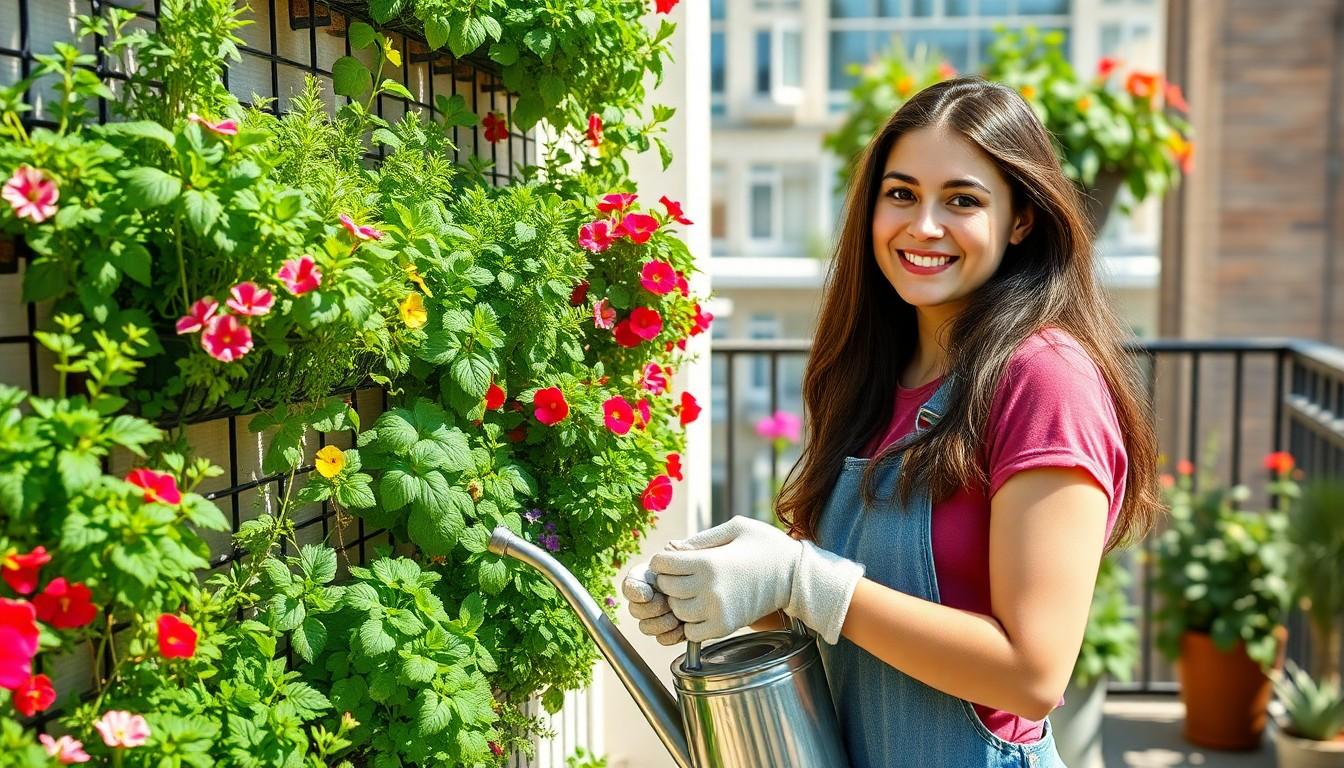Imagine transforming your dreary wall into a lush, green masterpiece without sacrificing precious floor space. Vertical gardening systems are here to save the day, turning even the smallest apartments into vibrant jungles. They’re not just for the green thumbs; anyone can embrace this innovative gardening trend and enjoy the benefits of fresh herbs, colorful flowers, and even a few veggies, all while making their neighbors a tad envious.
Overview of Vertical Gardening Systems
Vertical gardening systems facilitate the growth of plants in limited spaces by utilizing wall surfaces. Numerous designs exist, including wall-mounted planters, modular systems, and freestanding green walls, each catering to diverse aesthetic and functional preferences. Various plants thrive in vertical gardens, from herbs like basil and mint to vibrant flowers such as petunias and geraniums.
Ease of maintenance characterizes vertical gardening, especially when using self-watering systems or integrated drip irrigation. Many systems maximize sunlight exposure and improve air circulation, promoting healthier plant growth. Urban dwellers increasingly adopt vertical gardening techniques, allowing for the greening of previously unused spaces.
Cost-effectiveness presents another advantage; DIY options often involve repurposing materials like pallets and old gutters. Retailers offer numerous commercial vertical garden kits, simplifying the setup process for newcomers. Environmental benefits also come into play, as vertical gardens contribute to urban biodiversity and help reduce air pollution.
Community engagement often develops through vertical gardening initiatives, encouraging neighbors to share their gardening experiences. Gardeners can harvest fresh produce year-round with careful plant selection tailored to specific climates. Overall, vertical gardening systems represent a creative solution to contemporary gardening challenges, converting limited spaces into lush, productive areas.
Types of Vertical Gardening Systems

Vertical gardening systems come in several forms, each catering to specific needs and preferences.
Wall-Mounted Planters
Wall-mounted planters attach directly to walls, maximizing space efficiently. These systems suit small areas like balconies or indoors. They come in various designs, from simple pockets to intricate shelves. Materials, such as wood or metal, enhance the visual appeal while providing durability. Easy access for maintenance allows for effortless care of plants. Common plants in these systems include herbs and flowering species. These gardens can improve indoor air quality while adding greenery to living spaces.
Freestanding Vertical Planters
Freestanding vertical planters deliver flexibility in garden placement. These systems can adapt to any outdoor space, such as patios or gardens. They often feature multiple tiers, allowing for various plant types. Built-in irrigation systems promote healthy growth by ensuring adequate moisture. Additionally, they provide aesthetic appeal with their vertical structure, serving as focal points. Common uses include growing vegetables and ornamental plants. Gardeners can easily move these planters, which facilitates seasonal adjustments and care.
Benefits of Vertical Gardening Systems
Vertical gardening systems offer numerous advantages for urban gardening enthusiasts. They maximize limited spaces while bringing harmony between nature and architecture.
Space Efficiency
These systems allow for the cultivation of plants in vertical arrangements. By utilizing wall space, individuals can grow herbs, vegetables, and flowers without occupying floor area. Urban dwellers benefit from this efficiency, as it turns balconies and small yards into green sanctuaries. Compact designs such as wall-mounted planters and freestanding units enhance usage of available surfaces. Maximizing productive plant density matters especially in limited environments. The incorporation of tiered designs often results in stunning displays of nature, all while conserving precious ground space.
Aesthetic Appeal
Aesthetic value transforms vertical gardens into vibrant focal points. Various designs, colors, and plant combinations create visual interest in both indoor and outdoor settings. Homeowners can choose from modular systems or bespoke arrangements to reflect personal style. Seasonal changes enhance beauty by featuring different blooms throughout the year. Gardeners can easily switch out plants for seasonal variety, ensuring constant freshness. Stunning greenery creates inviting atmospheres, whether on balconies, patios, or interior walls. Integrating vertical gardens with architectural elements further boosts overall home appeal.
Improved Air Quality
Enhanced air quality emerges as another significant benefit of vertical gardening. Plants naturally filter pollutants and produce oxygen, contributing to healthier living environments. Indoor gardens reduce carbon dioxide levels while increasing humidity, resulting in more comfortable settings. By growing diverse plant species, individuals promote urban biodiversity. Improved air circulation around vertical gardens also combats mold and allergens. The positive impact on local ecosystems supports sustainable urban living. Individuals contribute to cleaner air while enjoying the aesthetic and practical benefits of their gardens.
Choosing the Right Vertical Gardening System
Selecting an appropriate vertical gardening system ensures successful growth and enjoyment. Consider practical factors that affect your choice and the types of plants you want to cultivate.
Factors to Consider
Space limitations determine the type of vertical gardening system suitable for your area. Assessing available sunlight helps in choosing plants that thrive in those conditions. Watering needs of different plants influence systems with integrated irrigation or self-watering features. Material choices range from wood to plastic, affecting durability and aesthetics. Size of the chosen system impacts the number of plants you can grow, ensuring you focus on scalability. Style preference also plays a significant role; some gravitate towards sleek modern designs, while others prefer rustic charm.
Popular Plants for Vertical Gardening
Herbs remain an excellent choice for vertical gardens, thriving in limited spaces. Lettuce and spinach flourish with proper sunlight, providing fresh greens for salads. Strawberries can enhance both productivity and visual appeal, cascading beautifully from planters. Succulents offer low-maintenance beauty, perfect for those seeking a minimal-effort garden. Ornamental plants, such as ferns and ivy, add texture and color to vertical systems. Tomatoes, with their climbing behavior, require support but can yield bountiful harvests in the right setup.
Maintenance of Vertical Gardening Systems
Maintaining vertical gardening systems ensures healthy plants and vibrant displays. Regular watering is essential, particularly for systems without self-watering features. Checking soil moisture levels every few days helps gauge irrigation needs. Additionally, plants in vertical gardens often benefit from a nutrient-rich fertilizer applied monthly.
Periodic pruning keeps plants healthy and encourages new growth. Removing dead leaves or spent flowers promotes air circulation and reduces disease risk. Inspecting for pests or diseases maintains the overall health of the vertical garden. Early detection of issues allows for prompt treatment and improves plant longevity.
Cleaning planter surfaces ensures optimal sunlight penetration and prevents the buildup of algae or mold. Using a soft brush or cloth during regular maintenance keeps the garden looking pristine. Adjusting the placement of plants based on growth patterns optimizes light exposure and air circulation.
Seasonal adjustments may also enhance garden performance. Rotating plants in different seasons or replacing them with new varieties adds visual interest. Regularly assessing plant conditions ensures any necessary adjustments happen promptly, keeping the vertical garden thriving throughout the year.
Replenishing growing medium every few years aids in plant vitality. Fresh soil supplies essential nutrients and improves root health. Exploring organic options for soil amendments boosts the overall sustainability of the vertical gardening system.
Through consistent maintenance, vertical gardens can flourish, turning walls into lively, green displays.
Conclusion
Vertical gardening systems offer an innovative way to bring greenery into urban spaces. They not only enhance the aesthetic appeal of homes but also contribute to healthier living environments. With a variety of designs available, anyone can find a system that fits their space and style.
By selecting the right plants and maintaining these gardens properly, individuals can enjoy the benefits of fresh produce and improved air quality. As urban dwellers continue to embrace this sustainable trend, vertical gardens will play a vital role in fostering a connection to nature amidst concrete surroundings. Ultimately, vertical gardening systems are more than just a trend; they’re a practical solution for modern living.




